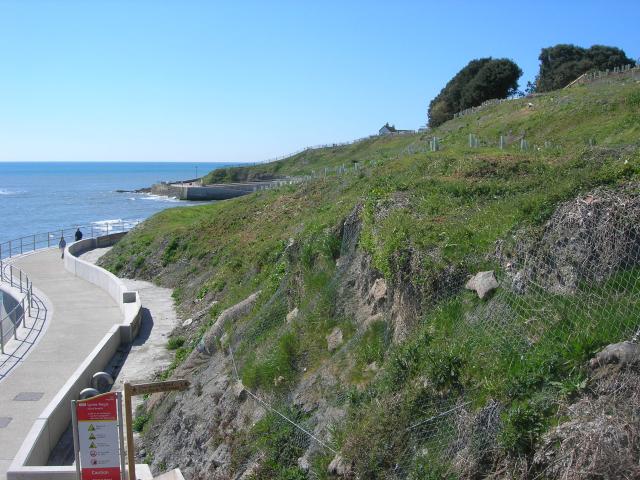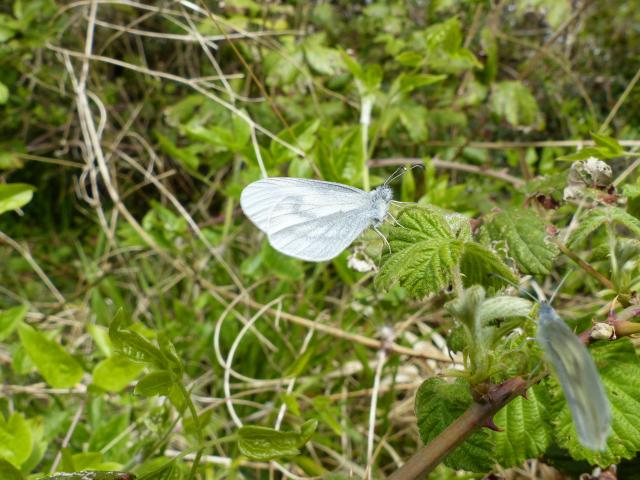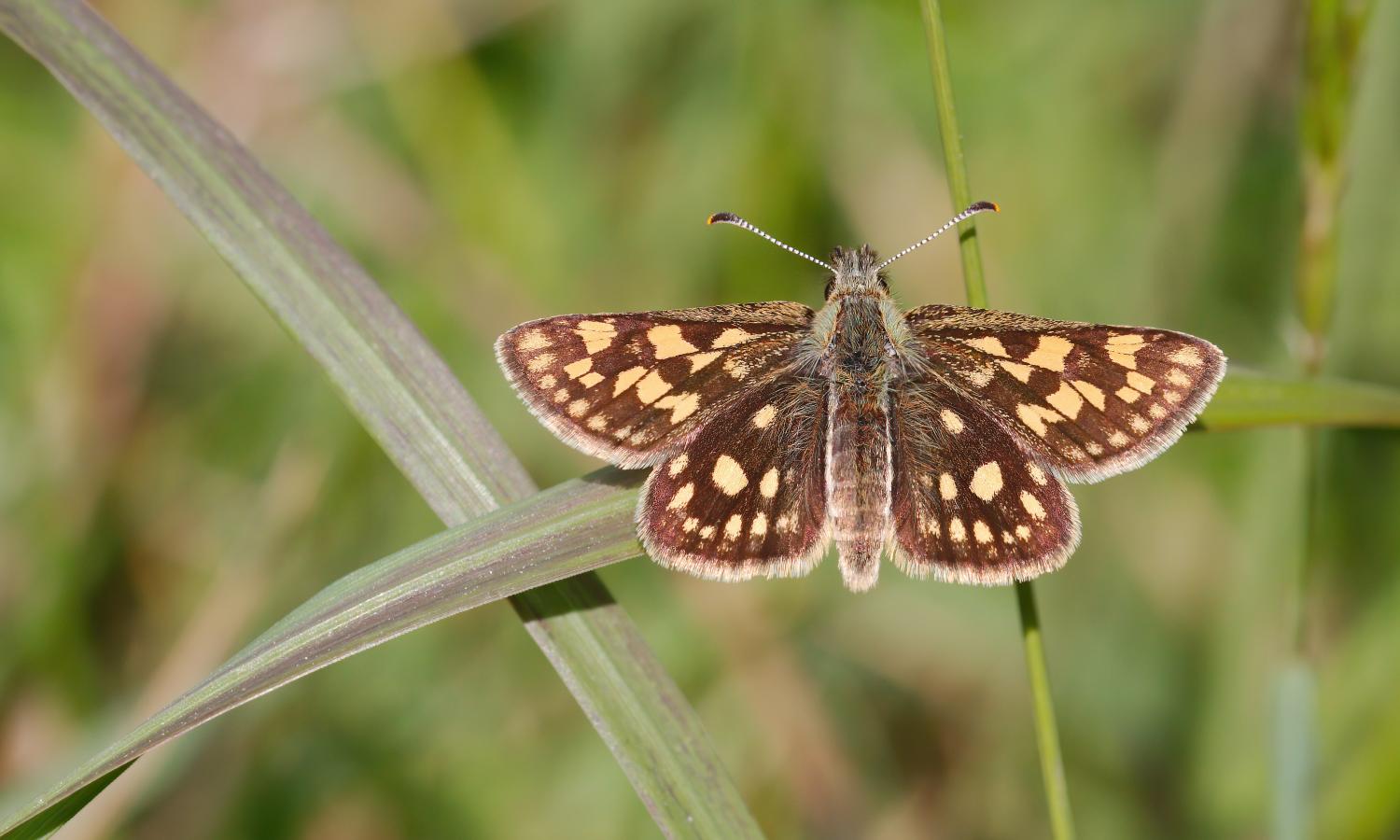The difference habitat creation can make for threatened butterflies
Maintaining and enhancing semi-natural habitats where species still occur is still the principle tenet for conserving butterflies and moths in the UK.
In recent decades this idea has been expanded from working on single sites to multiple sites, including those where the target species is absent in the hope that these may be recolonised from the remaining populations. This landscape-scale approach has been shown to be very effective, with most such projects focusing on improving the condition of sites where the target butterfly used to occur but they can include sites where the species in question have never been present.
Such sites which have never been occupied may already support semi-natural habitat but in form that makes it unsuitable for the target species. For example, if a grassland has always been heavily grazed then it is unlikely to support butterflies and moths that require taller swards. The emerging practice of habitat creation adds another dimension to this landscape-scale approach, in that opportunities might arise to create new sites from scratch and in locations which improve the connectivity between existing populations.
Perhaps the best-known examples of this approach are those promoted by Butterfly Conservation's Building Sites for Butterflies project, including the well-documented species-rich chalk grassland on the Weymouth Relief Road in Dorset. As well as being colonised by many widespread species, several threatened butterflies, including the Small Blue and Dingy Skipper, have established new populations. But can this approach work for our most highly threatened species which often have more complex habitat requirements?
Back in 2013, I met up with Dr Phil Sterling, then Dorset County Council's Natural Environment Manager, on the cliffs east of Lyme Regis. Phil was working for West Dorset District Council on the project team led by Balfour Beatty to design and construct the new sea defences for the town at East and Church Cliffs - the Lyme Regis Environmental Improvements Phase 4 to give its proper title. This was a complex engineering scheme working in a highly designated environment requiring considerable care to avoid damaging the vegetation on the cliff slopes yet leave the town better protected from landslips. The end result was the creation of a stabilised slope of bare clay and greensand minerals, avoiding the use of topsoil entirely, to encourage with some assistance natural regeneration of wildflowers, and colonisation of other wildlife from nearby slopes.
We knew there were well-established Wood White populations on the undercliffs between Axmouth in east Devon and immediately west of Lyme Regis. Further east of Lyme Regis there had been occasional Wood White records on the cliffs towards Charmouth, but these are extremely difficult (and dangerous) to access so no one knew if these were occasional sightings or established populations.

Phil and I thoroughly checked the proposed East Cliff restoration area and adjoining land. We found no Wood White but a few small patches of two of the butterfly's larval foodplants, Meadow Vetchling and Common Bird's-foot-trefoil, were present on the adjoining land. This gave us hope that if we included these plant species in the hydroseed mix to be used in the restoration, potential breeding habitat might be created. This is exactly what happened in 2014. Seeds, of local provenance were used together with some plug planting. Over the next few years I visited the site regularly in the Wood White flight period (the butterfly is double-brooded in Dorset) and was pleased to see the restored habitat develop. The site's topography provided some natural shelter, but some scrub had also established.
I never quite gave up hope but each year I have to admit I was always slightly disappointed not to see Wood White there. On the 27th April this year my wife Ruth and I went to Lyme Regis for the day and I took the opportunity to look for Wood White on the cliffs west of the town but the weather was against me, there had been further cliff falls and maybe I was a bit early in the season. As we walked back to the East Cliff car park the sun came out and I caught a glimpse of a rather slow-flying white in the distance on the restoration area. Instinctively I knew it was a Wood White, but naturally I wanted to be sure so ran back to the car to retrieve my binoculars asking Ruth to keep an eye out for any more sightings. By the time I got back the sun had gone in but Ruth said the butterfly had flown round her head several times and she thought there might have been two of them. So we waited for the sun to emerge once again and finally I was able to focus on the butterfly, see those distinctive black wing tips of the male Wood White. What a find! I spent the next 30 minutes trying to get a decent confirmatory photo whilst Ruth explained to frequent passers-by what was so interesting in the undergrowth. Eventually I photographed two males together and saw another male further up the slope.

Three male butterflies don't make a population, but these were the first records for Dorset in 2021. So further checks will hopefully confirm females are present too and that they are indeed breeding. We can't be sure where the butterfly has colonised from but the nearest records to the east were only several hundred metres away, so this seems a likely source. If these records do represent a new population, then this represents a significant success for a species Butterfly Conservation considers one of its highest conservation priorities. There are probably ono more than 50 populations left in the UK, so a new one really will count and we believe this is the first time new habitat has been successfully created for the butterfly.
On the undercliffs Wood White habitat eventually scrubs over but is renewed by frequent cliff falls with the larval hotspots recolonising bare ground. Of course, this won't happen on the East Cliff restoration area as it is designed to do precisely the opposite and stabilise the cliffs. So, some thought will need to be given to how best to manage the site to maintain the butterfly's habitat in the long-term, but this seems to me to be a nice problem to have!
Dr Sam Ellis, International Director
Thanks to Dr Phil Sterling, Building Sites for Butterflies Programme Manager for contributions to this blog.

